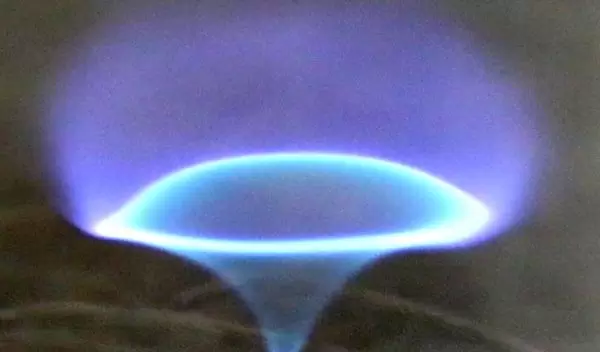
Researchers identify structure of 'blue whirls'
"Blue whirls" -- small, spinning blue flames that produce almost no soot when they burn -- have attracted interest since their discovery in 2016, in part because they represent a potential new avenue for low-emission combustion.
Now, a team of U.S. National Science Foundation-funded researchers at the University of Maryland and Texas A&M University has identified how these intriguing whirls are structured. The findings, published in the journal Science Advances, serve as a basis for further investigations into how to create blue whirls in a more controlled way.
Using high-performance computing methods at the University of Maryland's Deepthought2 cluster and other computer systems, the researchers showed that a blue whirl is composed of three different flames -- a diffusion flame and premixed rich and lean flames -- which all meet in a fourth structure, a triple flame that appears as a whirling blue ring.
The engineers also found that vortex breakdown, a fluid instability that occurs in swirling flows, enables the blue-whirl structure to emerge.
"The flame and flow structure revealed by the simulations serve as a base to further investigate how to create the blue whirls in a more controlled way," said Xiao Zhang of the University of Maryland. "That leads to pathways to answering more complex questions."
Examples of such questions are: How do researchers create blue whirls on different scales? Can engineers bypass a transitional, sooty, dangerous fire whirl stage and create the stable and clean blue whirl directly? Newly developed algorithms and models provide tools to find these answers, according to the investigators.
"Blue in the whirl indicates that there is enough oxygen for complete combustion, which means less or no soot, and is therefore a cleaner burn," said Elaine Oran of Texas A&M. "We now know that a blue whirl will burn all the fuel available as it exits a burner or from a surface."


